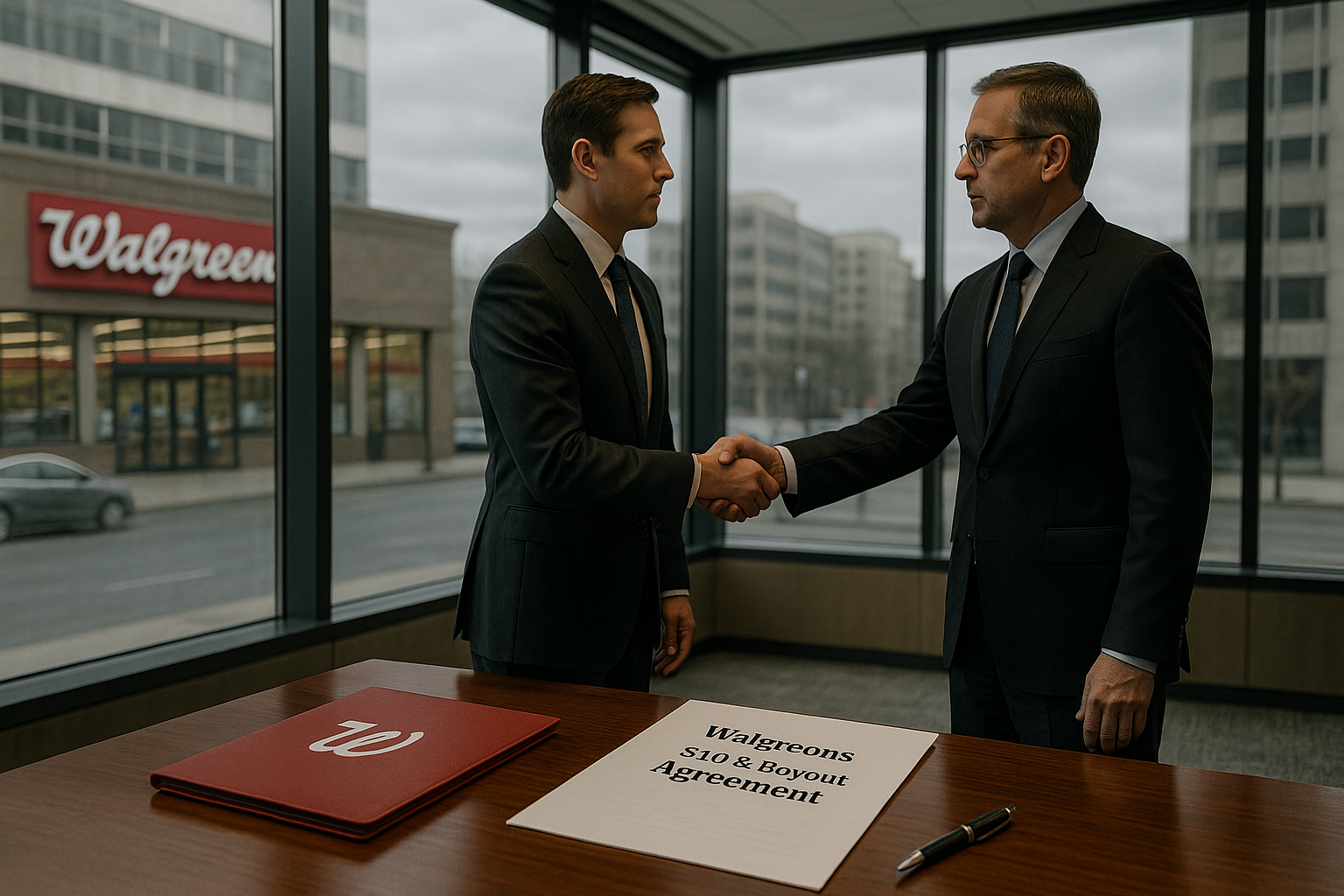Walgreens shareholders have officially waved the white flag.
In what can only be described as the corporate equivalent of tapping out, investors gave their blessing yesterday to a $10 billion private equity buyout that will take the 123-year-old pharmacy chain out of the public spotlight after years of painful decline.
The approval wasn't exactly a nail-biter. When your stock has plummeted roughly 75% over five years—I've watched this trainwreck since 2019—even a lowball offer starts looking pretty good. The deal, spearheaded by former CEO and current chairman Stefano Pessina (who already owns 17% of the company), values Walgreens at about a third of its 2018 worth.
Let's be honest here. This isn't so much a vote of confidence as it is an acknowledgment of defeat.
"It's the best option in a sea of bad ones," one institutional investor told me after the vote, requesting anonymity because, well, who wants to admit they've been holding onto a stock that's been circling the drain for half a decade?
The pharmacy giant has been caught in what industry analysts call a perfect storm, though "perfect nightmare" might be more accurate. Amazon's aggressive push into prescription drugs. Razor-thin margins squeezed even further by pharmacy benefit managers. A half-baked healthcare services pivot that never quite found its footing. It's been... rough.
Remember that Theranos partnership? Yikes.
Walgreens has tried everything short of reading tea leaves to reinvent itself. Those VillageMD clinics? An attempt to transform stores from "where you pick up prescriptions and maybe an overpriced greeting card" into actual healthcare destinations. The results have been, shall we say, mixed.
Going private actually makes a certain kind of sense. When you're performing emergency surgery on a business model, it helps not to have Wall Street analysts critiquing your technique every three months. Private ownership means Pessina and his consortium can make the painful cuts—and they will be painful—without quarterly earnings calls hanging over their heads like the sword of Damocles.
"The transformation needed here is structural and deep," says retail analyst Maria Fernandez. "They need time and flexibility that the public markets simply don't provide anymore."
But here's the rub (there's always a rub): private equity doesn't exactly have a stellar track record when it comes to nursing retailers back to health.
Look, we've all seen this movie before. Toys R Us, anyone? The standard playbook—load up with debt, sell off real estate, slash costs, flip back to public markets—often leaves companies looking like the corporate version of a taxidermied pet. Technically still there, but... not really.
What's particularly fascinating (or troubling, depending on your perspective) is Pessina's central role in this drama. The man who presided over Walgreens' decline is now positioning himself as its potential savior. It's a bit like the captain who ran the ship aground offering to buy it from the passengers, promising he knows a secret route to safer waters.
"I've got to give the guy credit for chutzpah," a former Walgreens executive told me over coffee last week. "But then again, no one knows the company's issues better than he does."
For the 200,000+ employees across Walgreens' roughly 8,500 stores, the future remains murky at best. Hundreds of locations have already been earmarked for closure before the buyout. That number will almost certainly grow once the deal closes.
The corner drugstore as we knew it is becoming an endangered species. CVS has transformed itself into a healthcare behemoth with its Aetna acquisition. Amazon looms ever larger. And Walgreens? They're heading backstage to attempt a costume change away from public view.
For shareholders—especially long-term ones who've watched their investment wither—this represents a disappointing but perhaps necessary conclusion. The $10 billion offer isn't great, but it's better than the alternative: continuing to hold on and hope for a miracle that seems increasingly unlikely.
Whether this buyout represents a shrewd rescue operation or simply hospice care for a dying retail model remains to be seen. Sometimes the most humane thing you can do is pull the plug on quarterly earnings expectations.
I suppose we'll find out in a few years whether there was still life in the old pharmacy chain after all.
